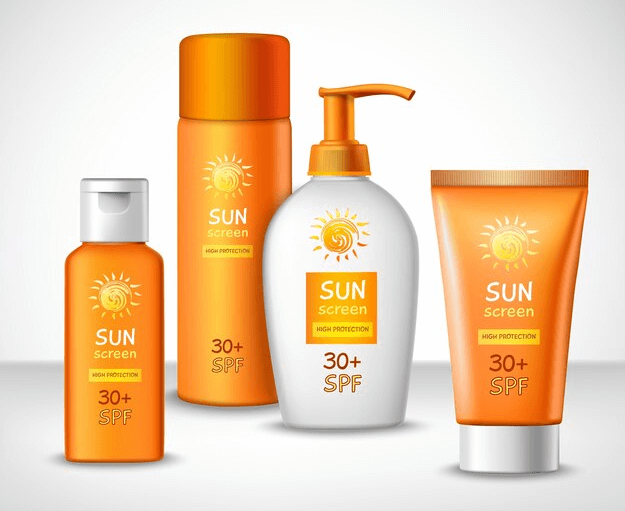
Understand Your Hair Type: A Comprehensive Guide
Introduction to Hair Types
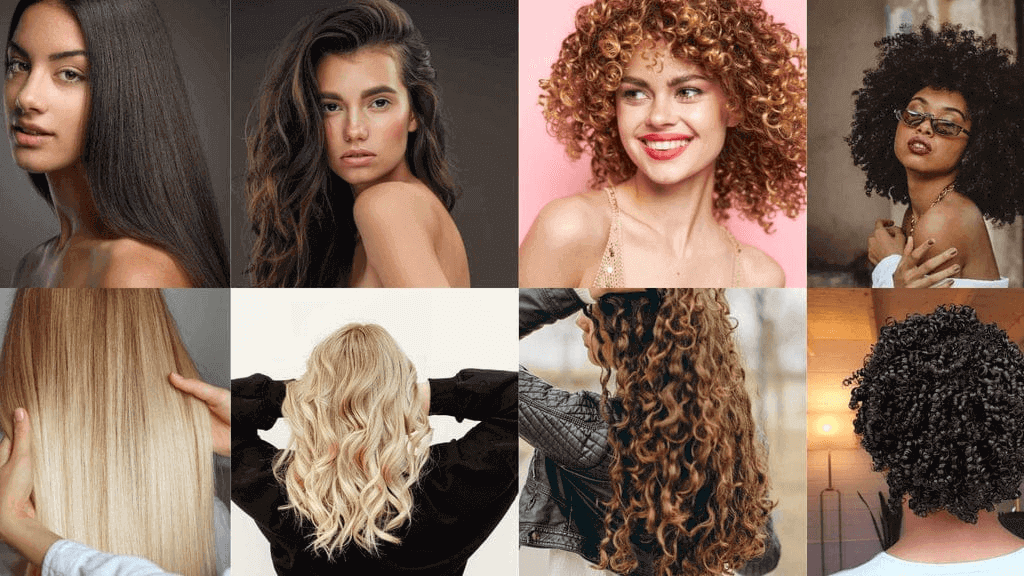
Determining your hair type is crucial for discovering the best ways to style and care for it. Hair can generally be categorized into four primary types: straight, wavy, curly, and coily. Each type has its own set of characteristics and subcategories, which influence how you should approach hair care and styling. Understanding your specific hair type will help you select the right products and techniques to keep your hair healthy and looking its best.
The Four Main Hair Types
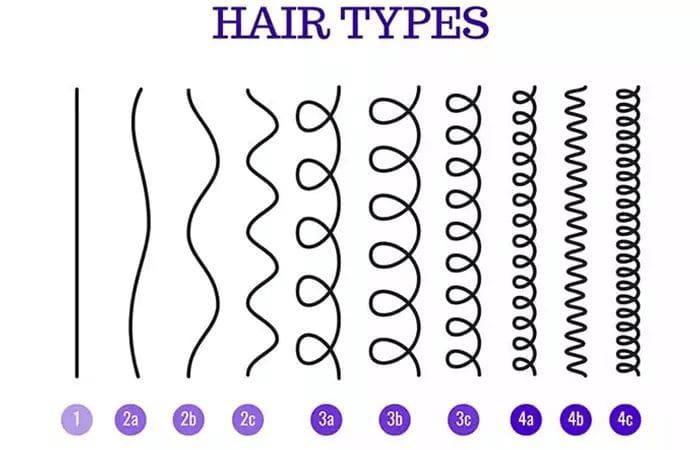
- Straight Hair (Type 1)
Straight hair lies flat against the scalp and lacks any curl pattern. It can be categorized further into three subtypes:- Type 1A: Thin, fine, and very straight, often appearing glossy and prone to oiliness.
- Type 1B: Medium thickness with some volume, allowing for a bit of curl or wave.
- Type 1C: Coarse and thick, with the potential for creating waves or curls with styling.
- Wavy Hair (Type 2)
Wavy hair features an S-shaped pattern and can range from loose waves to more defined curls. The subcategories are:- Type 2A: Light waves with minimal volume and a slightly tousled look.
- Type 2B: More defined waves that can be prone to frizz but perfect for beachy styles.
- Type 2C: Thick and full waves with a well-defined S shape, which can also be prone to frizz.
- Curly Hair (Type 3)
Curly hair is characterized by spiral curls that can vary in tightness. The subtypes include:- Type 3A: Loose, defined curls with minimal frizz.
- Type 3B: Tighter curls with significant volume and a tendency to frizz.
- Type 3C: Very tight curls that are springy and full of volume but prone to dryness.
- Coily/Kinky Hair (Type 4)
Coily or kinky hair is known for its tight curls and significant volume. It can be further divided into:- Type 4A: Soft, springy coils with a defined S pattern.
- Type 4B: Z-shaped curls that can vary in thickness and often require curl-enhancing products.
- Type 4C: Extremely tight curls with a tendency to shrink and become very dry.
Hair Type Chart Overview (image of 4x basic hair types)
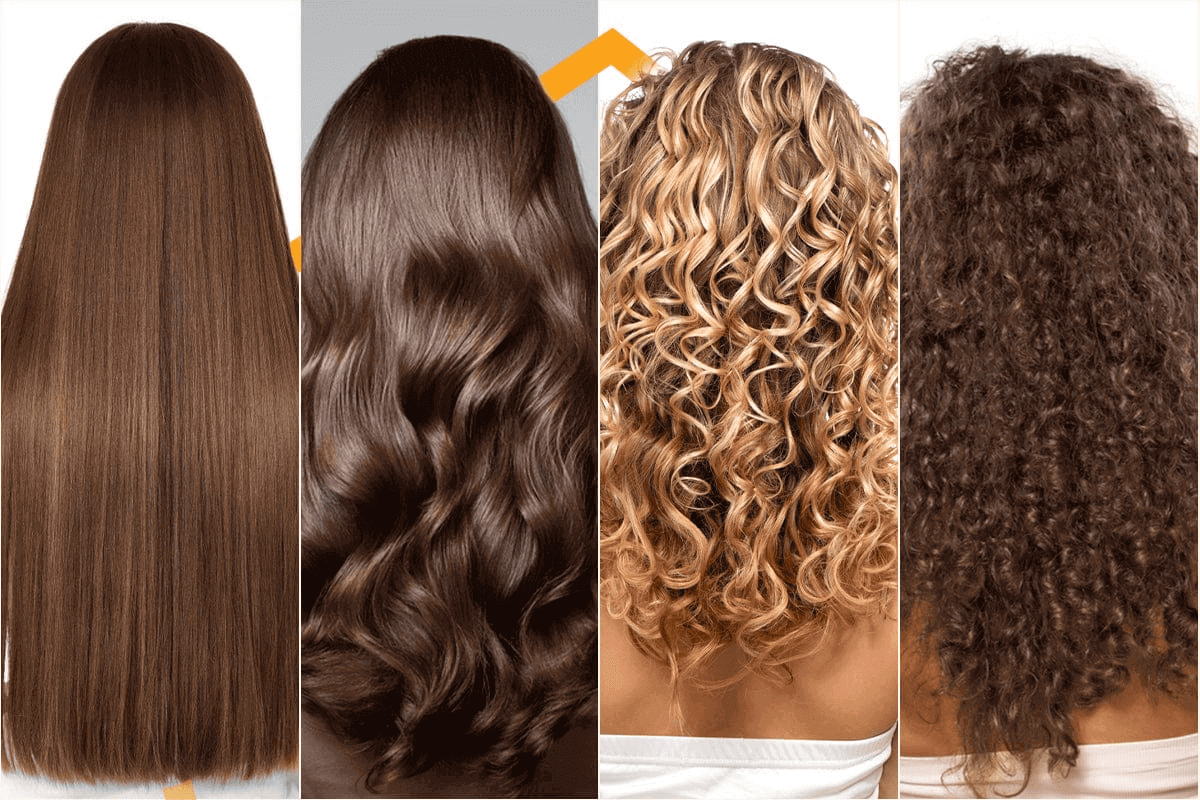
Straight Hair (Type 1)
- Type 1A: Very straight, thin, and often oily.
- Type 1B: Medium thickness with some volume.
- Type 1C: Coarse and thick, with more potential for styling.
Wavy Hair (Type 2)
- Type 2A: Slight wave with minimal volume.
- Type 2B: Defined waves with some frizz.
- Type 2C: Thick, well-defined waves prone to frizz.
Curly Hair (Type 3)
- Type 3A: Loose curls with minimal frizz.
- Type 3B: Tighter curls with substantial volume.
- Type 3C: Very tight curls prone to dryness.
Coily/Kinky Hair (Type 4)
- Type 4A: Defined, springy coils.
- Type 4B: Z-shaped curls with varying thicknesses.
- Type 4C: Extremely tight curls with high shrinkage.
Determining Hair Porosity

Hair porosity refers to how well your hair absorbs and retains moisture. It can be categorized into three types:
- Low Porosity: Hair has a tight cuticle layer, making it difficult for moisture to penetrate.
- Medium Porosity: Hair absorbs moisture well and retains it effectively.
- High Porosity: Hair has gaps and holes in the cuticle, leading to quick absorption but also potential dryness.
The Float Test To determine your hair’s porosity, place a few strands in a bowl of warm water. If the hair floats, it indicates low porosity; if it sinks, it suggests high porosity.
Caring for Different Hair Types

- Straight Hair: Use lightweight, volumizing products and avoid heavy oils or serums. Dry shampoos can help manage oiliness.
- Wavy Hair: Use products that define and enhance waves, such as mousse or sea salt spray. Avoid heavy creams that can weigh down waves.
- Curly Hair: Opt for products that provide moisture and definition without silicones or sulfates. Embrace leave-in conditioners and avoid excessive heat.
- Coily/Kinky Hair: Focus on intense moisturizing with creams and oils. Minimize heat styling and protect hair with leave-in conditioners and deep conditioning treatments.
Conclusion
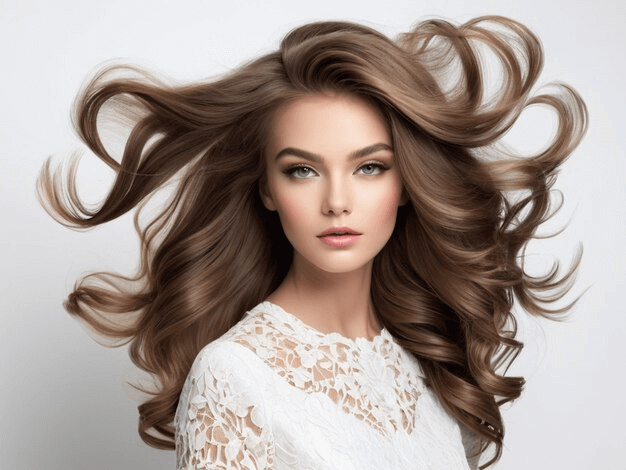
Understanding your hair type and porosity is essential for effective hair care. Each hair type requires specific products and techniques to maintain its health and appearance. Whether you have straight, wavy, curly, or coily hair, tailoring your hair care routine to your unique needs will help you achieve the best results.



